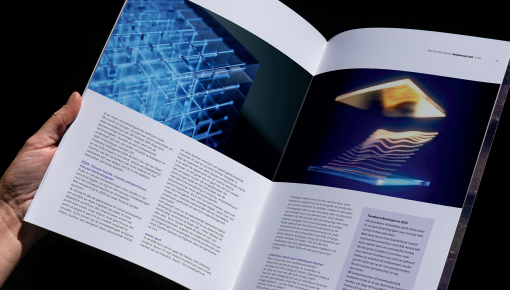
Strategy Made Tangible
In the third article of our series on Concept Cars, we delve into the organizational impact of these innovative designs. We interviewed Kasper Looije, Innovation Consultant at Qindle, to gain his insights on how concept cars serve as more than a physically manifested vision and act as catalysts for entire organizations.
The Role of Design in Business Success
Prior to Qindle, you worked at various companies that also had a strong focus on design, can you elaborate a bit on the impact on the business?
From my experience in design-driven companies, I can emphasize the significant role of design in enhancing business outcomes. Design is not just about aesthetics; it’s a key driver of tangible business results. Our focus on design leads to higher margins and customer preferences, attributing this to the quality and overall superior product experience that design-centric approaches deliver.
“Design is not just about aesthetics; it’s a key driver of tangible business results.”
Bridging Innovation and Organisational Unity
Would you say that Concept Cars can impact design-driven innovation?
A common issue in design-driven organizations is the isolation of innovation and design teams, each working independently on product designs for their market segment. This often leads to designs misaligning with strategic business objectives or contradictory outcomes across teams. Imagine working from a unified starting point, embodied by a ‘Concept Car.’ This approach aligns business, brand, and design strategies, making them tangible and applicable across the organization.
The Wider Organisational Impact
And if you look beyond the innovation and product development teams, how would Concept Cars impact the rest of the organization?
Beyond innovation and design teams, concept cars are crucial in bridging the gap between high-level leadership strategies and the broader organization. As described earlier, the development and outcomes of a Concept Car provide a tangible representation of these strategies – I am certain that this will foster engagement and alignment among all stakeholders. This approach enhances internal communication and accelerates market delivery by enabling teams to adapt to emerging trends and customer needs quickly.
“Concept cars are crucial in bridging the gap between high-level leadership strategies and the broader organization.”
Concept Cars in Action
Can you share a Concept Car example from Qindle?
At Qindle, we collaborated with a global personal care and home appliances industry leader. The collaboration resulted in a Concept Car for a “global sustainable packaging system.” This project went beyond creating tangible packaging visions; it established comprehensive design guidelines for the company’s future packaging efforts. The Concept Car allowed stakeholders – including consumers, business teams, marketing, design, and supply chain – to experience and align with the company’s vision of their brand experience through a curated digital and physical unboxing, as well as the tangible steps to take in the brand’s future sustainable vision in design and supply chain.
Making it Real
Thanks for sharing your experiences, do you have any final thoughts for the readers?
Concluding the series, I would like to emphasize the “Make it real” aspect. Don’t get stuck in high-level strategies and planning, but take the time, make the effort, and get the right people on board to go that extra mile and build your Concept Car. Whether it’s a digital experience, a business narrative, or a tangible product, the key is to explore that vision and make it real: something people can engage with. We’re always excited to be part of these journeys and are proud to see the impact unfold.
This is article 3 of a 3-part series focused on Concept Cars. Click here to read the first one, and here to read the second!



